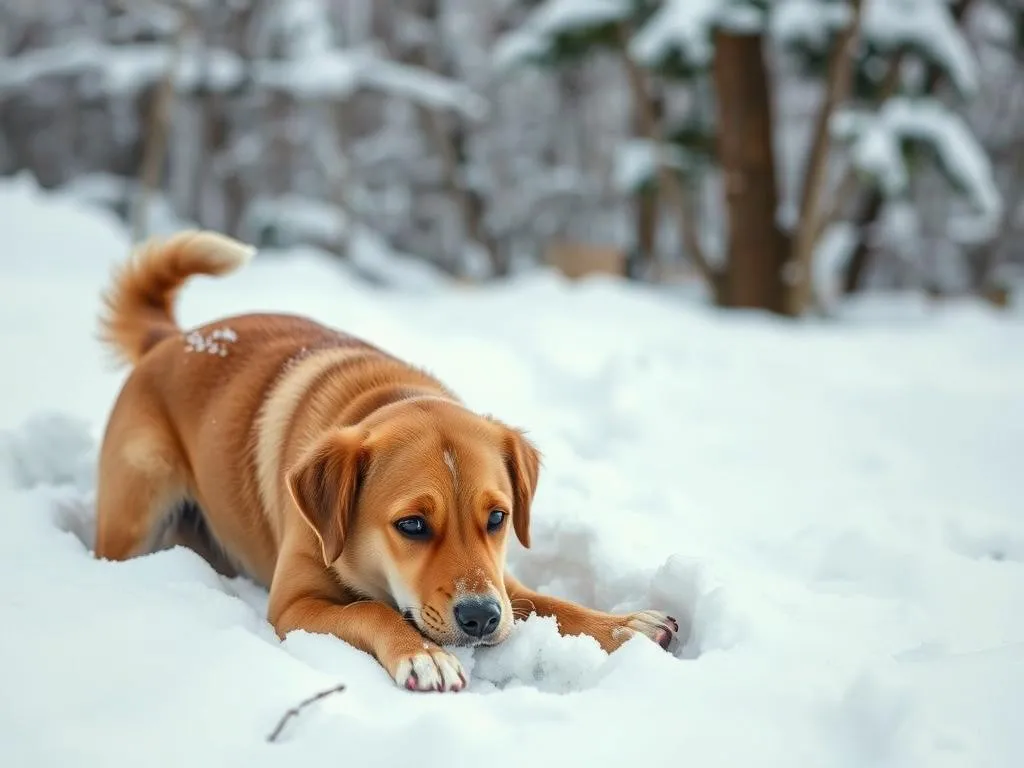
Winter brings a unique set of challenges for dog owners, especially when it comes to potty training. Many dogs may hesitate to do their business in the snow, leading to frustration for both them and their owners. Establishing consistent bathroom habits is crucial, no matter the weather. Below, we explore effective strategies to encourage your dog to poop in the snow.
Understanding Dog Behavior in Cold Weather
The Impact of Winter on Dogs
Cold weather can significantly affect dog behavior. Many dogs are naturally more sensitive to temperature changes, which can lead to reluctance when stepping outside in snowy conditions. You might notice your dog displaying signs of discomfort, such as whining, hesitating at the door, or even refusing to go outside altogether. Understanding these behaviors is essential for addressing their needs effectively.
Why Dogs May Resist Pooping in Snow
Dogs have territorial instincts and often prefer to relieve themselves in familiar environments. The cold and unfamiliar snowy terrain can create anxiety, making them less inclined to poop outside. Additionally, the frigid temperatures can be uncomfortable for their paws, further discouraging them from spending time outdoors.
Preparing Your Dog for Snowy Conditions
Acclimatization to Cold Weather
Gradual exposure to cold temperatures is key in helping your dog adapt. Start by taking your dog outside for short, frequent sessions in the snow, gradually increasing the time spent outdoors as they become more comfortable. This acclimatization process will help them associate snow with positive experiences rather than discomfort.
Suitable Gear for Your Dog
Investing in suitable gear can make a significant difference in your dog’s willingness to venture outside. Consider purchasing a dog coat to keep them warm and booties to protect their paws from ice and salt. Protective gear not only provides comfort but also helps your dog feel more secure while navigating snowy environments.
Training Techniques to Encourage Pooping in Snow
Establishing a Routine
Consistency is vital when it comes to potty training dogs in winter. Establish a regular schedule for bathroom breaks, ideally taking your dog out at the same times each day. This creates a predictable routine that helps them understand when it’s time to relieve themselves, even in less-than-ideal weather.
Positive Reinforcement Methods
Using positive reinforcement can effectively encourage your dog to poop in snow. When your dog successfully goes outside, reward them with treats and praise. Creating a rewarding environment reinforces the desired behavior, helping your dog associate snowy potty breaks with positive outcomes.
Designated Bathroom Areas
Choosing a designated bathroom area is crucial. Find a spot in your yard or a nearby snow-covered area that your dog can use consistently. Keep this area clear of deep snow to make it more inviting. Familiarity with a specific spot can help alleviate anxiety and encourage your dog to do their business in the snow.
Handling Resistance and Behavioral Issues
Common Behavioral Problems in Winter
During winter, many dogs experience anxiety or fear related to the snow. If your dog shows signs of reluctance, such as barking, whining, or attempting to turn back inside, it’s essential to address these issues calmly. Understanding your dog’s feelings can help you develop a more effective training approach.
Gradual Exposure Techniques
A step-by-step approach can help desensitize your dog to the snow. Start by allowing them to explore the snowy area at their own pace. Use leash training to guide them gently to the designated bathroom spot. Gradually increase the amount of time spent in the snow, rewarding them for any attempts to relieve themselves.
Health and Safety Considerations
Protecting Your Dog’s Paws
Winter conditions pose several hazards to your dog’s paws, including ice, salt, and chemicals used for de-icing. Protect your dog’s paws by using booties or applying paw balm before walks. After outdoor sessions, check their paws for signs of irritation and clean them to remove any harmful substances.
Recognizing Signs of Discomfort
It’s essential to recognize when your dog is too cold or uncomfortable. Signs of discomfort may include shivering, lifting paws off the ground, or reluctance to walk. If you notice these behaviors, it’s a good idea to shorten walks or seek veterinary advice to ensure your dog’s well-being.
Conclusion
Successfully training your dog to poop in snow requires patience and consistency. By understanding their behavior in cold weather, preparing them for snowy conditions, and using effective training techniques, you can create a positive experience for both you and your furry friend. Remember, adapting to seasonal changes is vital for successful dog training, and with the right strategies in place, winter potty breaks can become a routine part of your dog’s life. Stay patient, and soon enough, your dog will be comfortable pooping in the snow!









